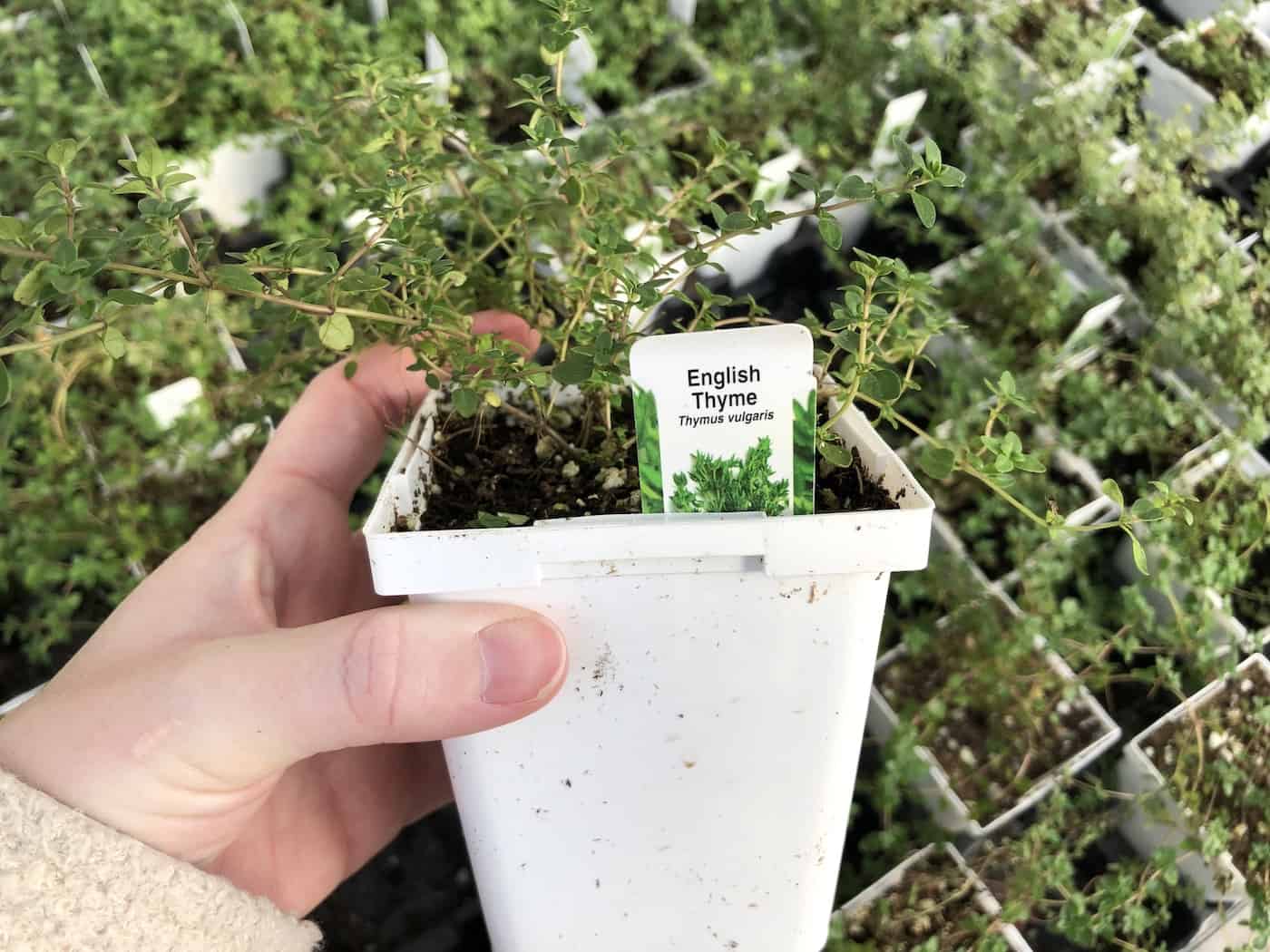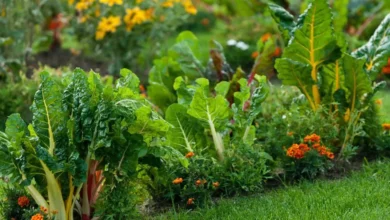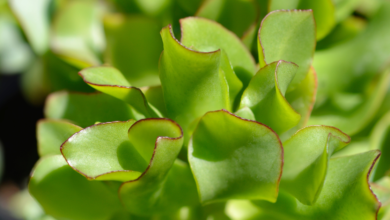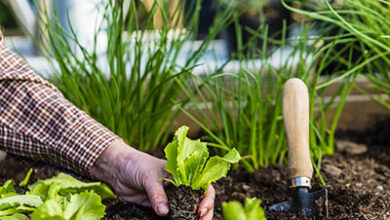Dill is a biennial culinary herb that can be grown in the sun or shade. While dill flowers best in sunny conditions, these blooms are not necessarily a good thing for culinary herb gardeners. Many gardeners grow dill only for its feathery foliage known as dill weed, and shady conditions can sometimes allow for higher production of this leafy herb per square foot of garden soil.
Dill is used most commonly in sauces, especially for fish dishes, potatoes, and vegetables. Salmon and asparagus are two dishes that commonly include dill as a culinary flavoring. As a member of the carrot family (Apiaceae/Umbelliferae), Dill also pairs nicely with carrots (especially when roasted in the oven with a bit of olive oil).
9. Chives
Chives are a perennial culinary herb from the onion family. Chives are quite a low-maintenance herb and will grow in sun or in shade. They are also easily grown from seed or from root divisions, and once they’re established, these hardy perennial plants seem to live forever (especially if allowed to go to seed)!
Chives are used as fresh green onions in salads, sauces, and on top of starchy dishes like baked potatoes. Their cheery pink/purple spherical flowers are lovely in salads as well. The flowers are also a favorite of bees and butterflies.

10. Thyme
Thyme is a popular culinary herb that grows on low-growing semi-woody shrubs. While this herb grows best in full sun, it certainly can be grown in shady environments. Just expect it to grow quite a bit more slowly in low-light locations.
Thyme is a nice herb to add to roast dishes, meat rubs, and subley flavored dishes like fish and chicken. The plants are also quite ornamental as a ground cover or cascading over a stone wall or rock garden.
11. Oregano
Oregano grows best in partial to full sun but is tough enough to grow in shady spots. As with thyme, it will grow more slowly in shade, but it can certainly be done. Even if your herb garden only gets a few hours of sun each day, oregano can grow quite vigorously once established. Just be sure that the soil is well-drained and not soggy for this heat-loving Meditteranean herb.
There are many different types of Oregano to grow in the herb garden. Greek Oregano is the type preferred for culinary applications. Italian Oregano plants resemble Greek Oregano but tend to have a more mild scent and flavor. Golden Oregano is a decorative type used mainly for ornamental purposes in sunnier sports.
Oregano is a must-have herb for many kinds of pasta, meat dishes, stews, and other hearty comfort foods. This strong herb is a common component in many spice blends and rubs.
12. Lovage
Lovage is a large perennial culinary herb. Lovage isn’t a total shade lover, but it will tolerate shade quite well, especially once happily established.
Lovage is used to flavor soups and other savory dishes. It has a strong savory flavor reminiscent of parsley or celery. Your lovage can go into fresh garden salads, potato salad (or baked potatoes), and of course, soups.
A lovage plant grows to about 5 feet tall (and several feet across). This large footprint makes it wise to choose its location carefully! It can be grown from seed, but I had better luck growing it in the shade when I purchased and planted a small lovage plant from the nursery.
13. Bee balm
open next page to continue reading….
[adinserter block=”3″]
[adinserter block=”4″]




